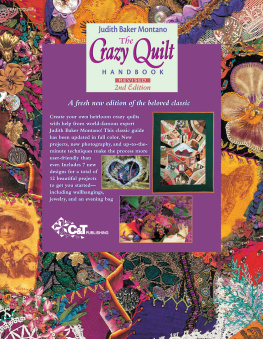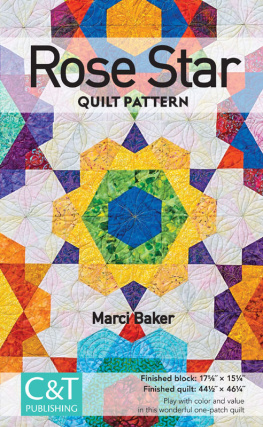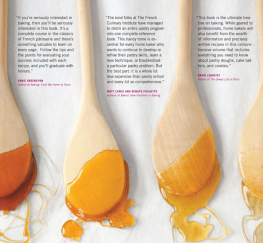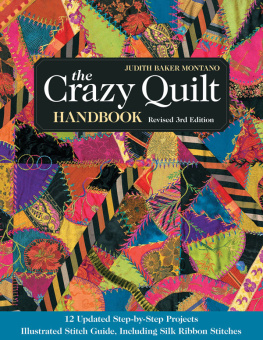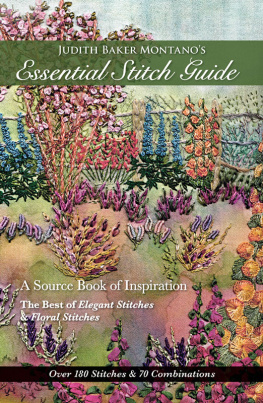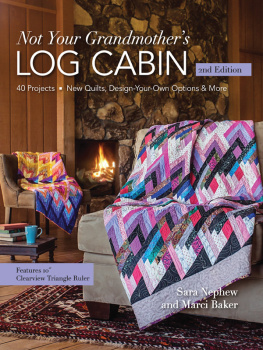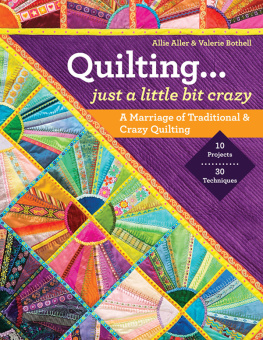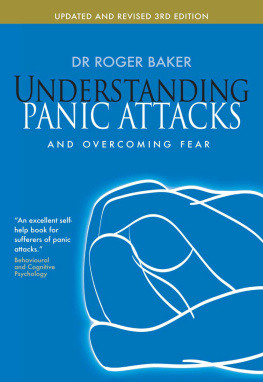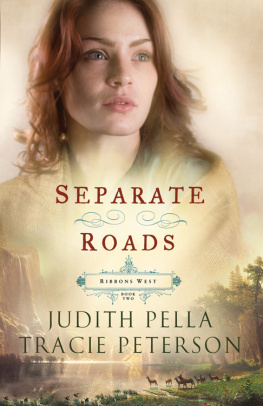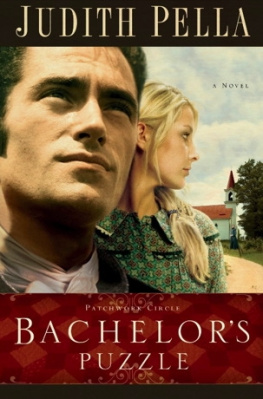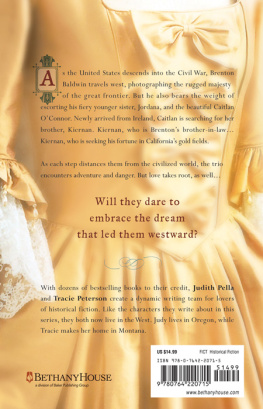
Dedication
To my special family who go beyond the call of duty by living with a creative person.
To Fred Montano, who was there for me with the first Crazy Quilt Handbook and is still a wonderful father to our children.
To Ernest Shealy, who nurtures and loves us allbest of all, me!
Preface
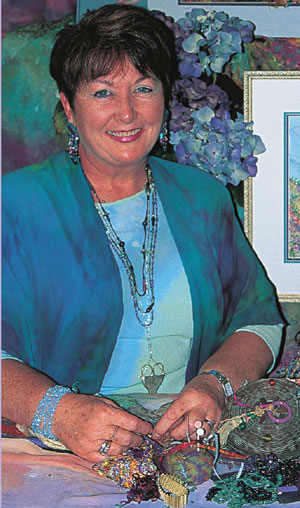
Photo by Ernest Shealy
Crazy Quilt Handbook Revision
We are now living in the new millennium, and the original Crazy Quilt Handbook has been in print since 1986! I can hardly believe it has been over fifteen years. Many things have changed for me in those yearsbut crazy quilting has always remained a constant. Publishing technology has also improved and we wanted to update and revise this basic Crazy Quilt Handbook with full color and to offer a few new patterns and ideas without losing its basic form, which is a beginning book featuring the Montano Centerpiece Method. We need those basic books which offer help and encouragement plus concise text and illustrations. I hope you enjoy the revision of the Crazy Quilt Handbook. For me it was a nostalgic journey and I enjoyed it very much.
Love, Judith
Judith Baker Montano, a Canadian-born fiber artist and the worlds leading crazy quilt artist, is an award-winning author of seven books. She incorporates ethnic and traditional influences from world travels into her work, as well as her love of the land and memories of her Alberta ranch home.
Judith started quilting when her family was living in Houston, Texas, where she was an active member of the Kingwood Quilt Guild. Her first prize-winning quilt was made in 1980, when she won Best of Show at the Calgary Exhibition and Stampede in Calgary, Alberta, Canada. It was a special victory, because her great-grandmother had won the same award in 1934.
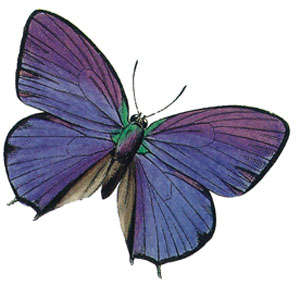
Crazy quilting has become a constant form of expression for Judith. Her contemporary style is evident in her unique crazy-quilt landscapes, art garments, and accessories, which feature Victorian stitches, beading, silk-ribbon, and punchneedle embroidery. Her garments and quilts have won several design awards in Canada and the U.S. and have been pictured in many national magazines. Judith designs for such companies as Bucilla Corporation, Mokuba Ribbons, Butterick Patterns, and Kanagawa Company. She has appeared on a number of national televison shows, such as HGTVs Simply Quilts and The Carol Duvall Show. Judith is able to apply her painting and photography skills to her books making them among the industrys best-selling books.
Judith is a graduate of California State University at Chico, and holds a degree in art and journalism. She enjoys teaching and lecturing, which takes her traveling worldwide at least 150 days of the year. She credits part of her success to the support of the Denver Art Museum and Imelda DeGraw, Curator of Textiles, who helped Judith in creating the original Crazy Quilt Handbook. The museum gave Judith her first museum show in 1988, and took her to Japan as an instructor with the 1990 Denver Art Museum Quilt Show in Tokyo. Judiths family includes her husband, Ernest Shealy, and their children Jason, Madeleine, Tara, Dana, Kristen, their spouses, and grandchildren. Judith divides her time between Los Angeles, California and LaVeta, Colorado.

Acknowledgments
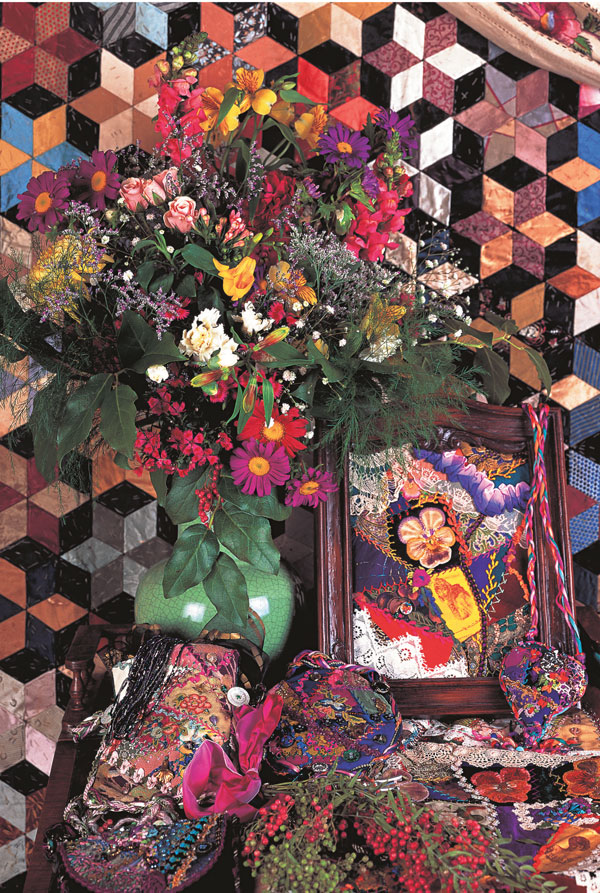
This book is the result of many years of study and work. It could never have come about without the support of family and friends. I want to give a special thank you to my husband, Ernest, who is always there with encouragement and help; to my son, Jason, who dares to be a dreamer and is too much like his mother; to my daughter, Madeleine, who is a sweet, creative soul and lover of animals and people; to my special daughters, Kristinwho gives her heart as a teacher and opens a door to learningand Danawhose warmth and unconditional love acts as a beacon; and to Tara, who goes at life from a different angle and teaches us all.
A very grateful thank you to my parents, Allen and Joyce, and to my godparents, Uncle Harry and Aunt Muriel. Together, the four of them gave me a wonderful heritage.
I am lucky to have many supportive and interesting friends. I would like to thank Wanda Washington, Frances Lange, Ruth Stonely, Imelda DeGraw, Maren Francis, Alice Bertling, Di Pettigrew, Pat Rogers, Carol Moderi, Chris Nyberg, and Fay Walker. A special thank you to Barb Kuhn, my editor, and Rose Sheifer my designer,we are always a great team.
Outdoor photography was shot at the Denver Botanic Gardens and at the Montano home.
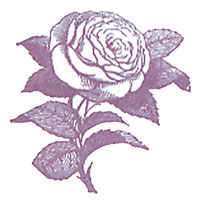
Crazy Quilt Definitions
Crazy quilting can be defined as a method of laying down bits and pieces of fabric in a haphazard fashion and sewing or appliquing them to a whole cloth. After the whole cloth is completely covered, each seam is covered with decorative details and a combination of embroidery. Unlike a real quilt, a crazy quilt has no batting and is tacked to a whole cloth backing.
Judith Baker Montano, 1986 and 2001
A patchwork quilt without ordered design
Websters Seventh
New Collegiate Dictionary
Into them women stitched their longingstheir hunger for beauty, their impatience with the monotony of their days, their desire for change or adventure, their love for color, which common custom said they might not display in dress. And in the thrill of creating new colors and designing new patterns, daring with cloth and needle to do what someone else had not done, the art of quiltmaking...caused much excitement of fancy in days that would otherwise have been uneventful.
Henderson McDermott
The Farm Journal, circa 1930
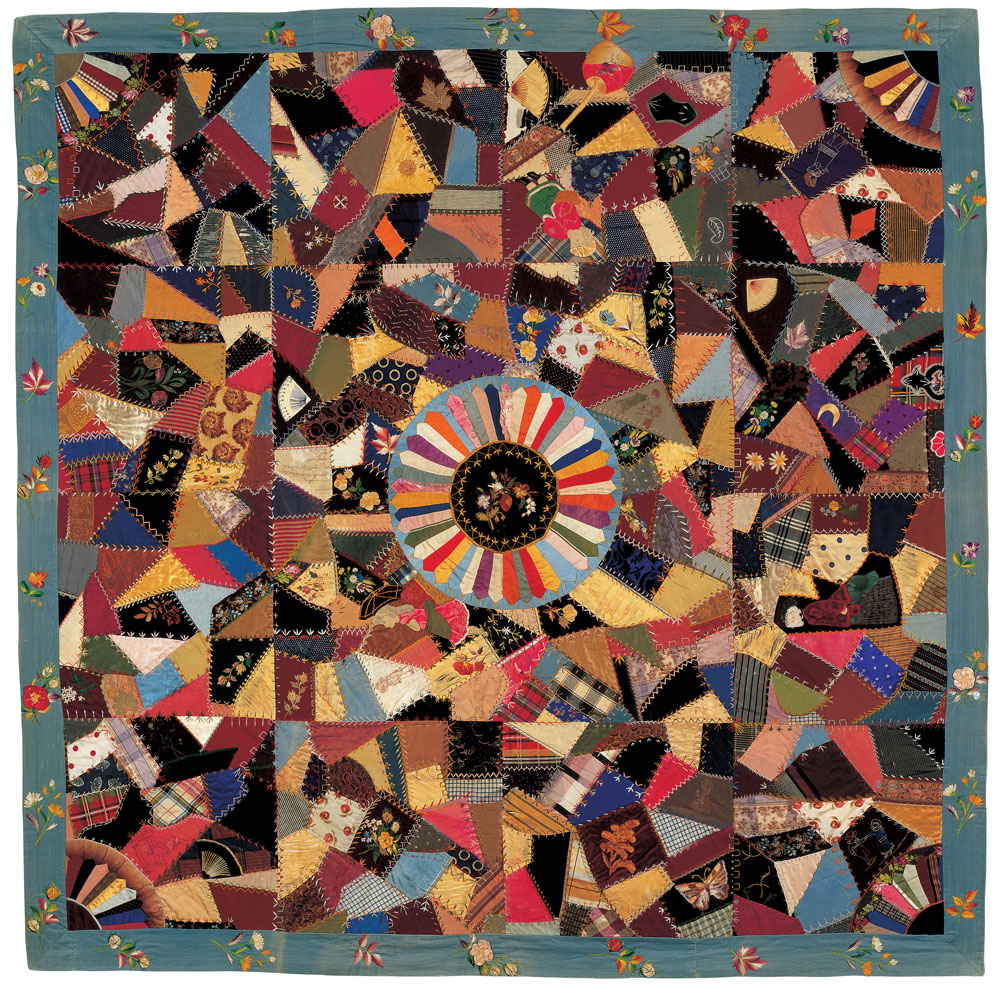
Courtesy of Pasadena Historical Museum
Recollections
Crazy quilts have always fascin-ated me. Though other crafts may distract me, I am always drawn back to the beautiful, outrageous crazy quilts. They remind me of mysterious, glittering jewels, like gypsy cousins peeking out from a patchwork of traditional sister quilts. They are the wild, black-sheep children, tolerated by conservative relatives; perhaps thats why I relate to them. I have always walked to a different drummer.
Crazy quilting is a special love of mine, the answer to my many interests. What other handcraft combines embroidery, sewing, appliqu, laces, ribbons, buttons, beading, painting and color design?
My determination to make crazy quilts began soon after I was married, when we lived in Europe during the 70s. In England, I saw some beautiful Victorian crazy quilts at the Victoria & Albert Museum. They really sparked my interest and I looked about for information on how to make them, but nothing seemed available. So I put it aside and turned toward embellishing clothing. Later, I turned to traditional quilting, but I never lost the longing to make a crazy quilt.
Next page
